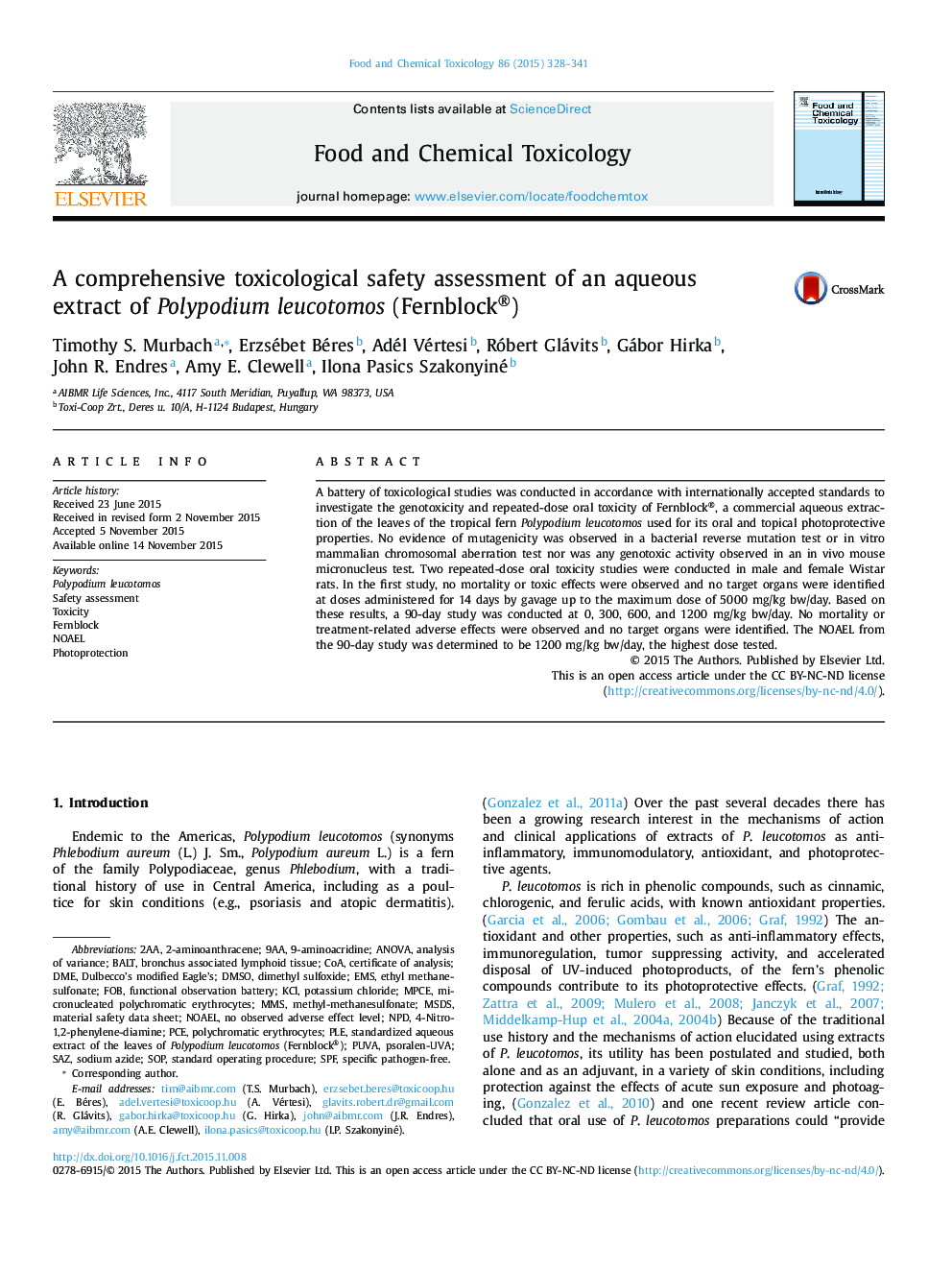| Article ID | Journal | Published Year | Pages | File Type |
|---|---|---|---|---|
| 5849619 | Food and Chemical Toxicology | 2015 | 14 Pages |
Abstract
A battery of toxicological studies was conducted in accordance with internationally accepted standards to investigate the genotoxicity and repeated-dose oral toxicity of Fernblock®, a commercial aqueous extraction of the leaves of the tropical fern Polypodium leucotomos used for its oral and topical photoprotective properties. No evidence of mutagenicity was observed in a bacterial reverse mutation test or in vitro mammalian chromosomal aberration test nor was any genotoxic activity observed in an in vivo mouse micronucleus test. Two repeated-dose oral toxicity studies were conducted in male and female Wistar rats. In the first study, no mortality or toxic effects were observed and no target organs were identified at doses administered for 14 days by gavage up to the maximum dose of 5000 mg/kg bw/day. Based on these results, a 90-day study was conducted at 0, 300, 600, and 1200 mg/kg bw/day. No mortality or treatment-related adverse effects were observed and no target organs were identified. The NOAEL from the 90-day study was determined to be 1200 mg/kg bw/day, the highest dose tested.
Keywords
EMSpsoralen-UVAPolypodium leucotomosSAZ9AABALTMPCEFOBNPDNOAELBronchus associated lymphoid tissueMMSMSDsCOA2-aminoanthracene2AASOPSPFKClPCEPLEDME9-AminoacridineDMSOmicronucleated polychromatic erythrocytesethyl methanesulfonateSafety assessmentpolychromatic erythrocytesfunctional observation batteryanalysis of varianceANOVAspecific pathogen-freeDimethyl sulfoxidestandard operating proceduresodium azideToxicityPhotoprotectionNo observed adverse effect levelMaterial safety data sheetPuvaPotassium chloride
Related Topics
Life Sciences
Agricultural and Biological Sciences
Food Science
Authors
Timothy S. Murbach, Erzsébet Béres, Adél Vértesi, Róbert Glávits, Gábor Hirka, John R. Endres, Amy E. Clewell, Ilona Pasics Szakonyiné,
